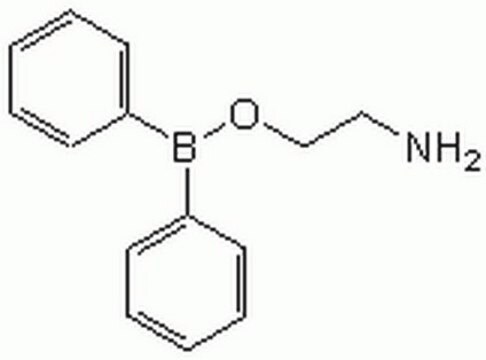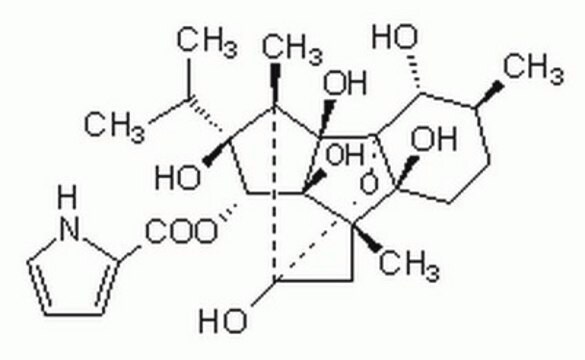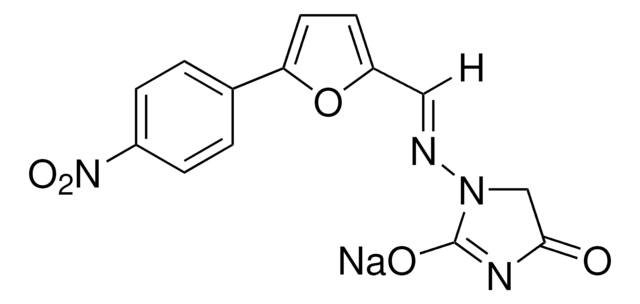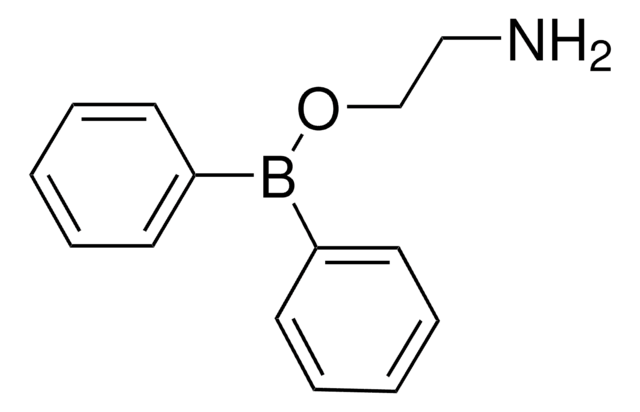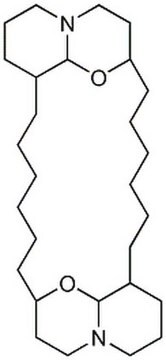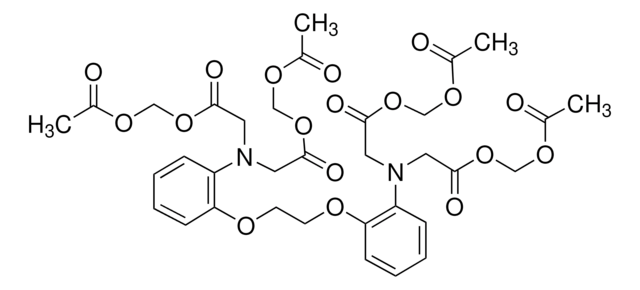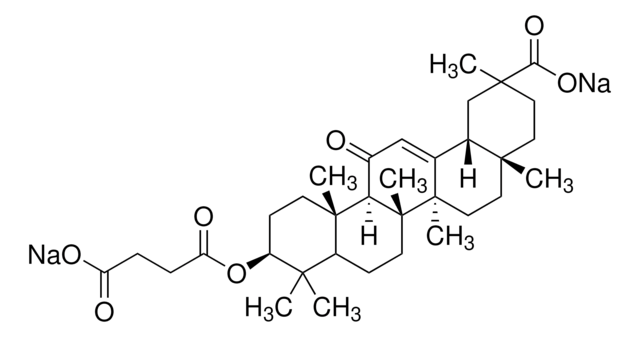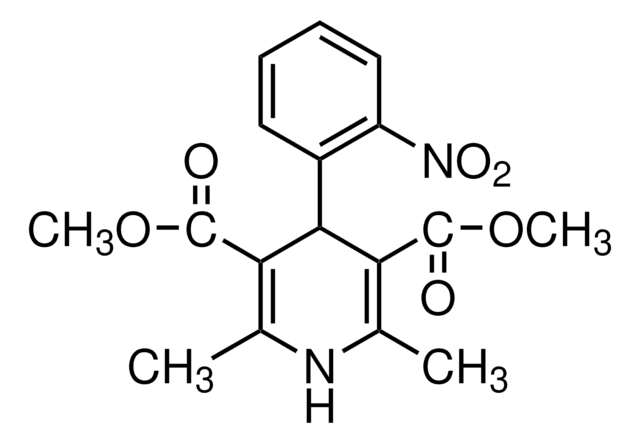All Photos(1)
About This Item
Linear Formula:
C28 H50 N2 O2
CAS Number:
Molecular Weight:
446.71
MDL number:
UNSPSC Code:
12352200
PubChem Substance ID:
NACRES:
NA.77
Recommended Products
form
film
Quality Level
color
colorless
solubility
DMSO: soluble
shipped in
dry ice
storage temp.
−20°C
SMILES string
[H][C@@]12CCCCCC[C@@]3([H])CCCN4CC[C@@]([H])(CCCCCC[C@]5([H])CCCN(CC1)[C@@]5([H])O2)O[C@@]34[H]
InChI
1S/C28H50N2O2/c1-3-7-15-25-17-21-30-20-10-14-24(28(30)31-25)12-6-2-4-8-16-26-18-22-29-19-9-13-23(11-5-1)27(29)32-26/h23-28H,1-22H2/t23-,24+,25-,26-,27+,28+/m1/s1
InChI key
PQYOPBRFUUEHRC-HCKQMYSWSA-N
General description
Synthetic form of the macrocyclic bis-1-oxaquinolizidine isolated from the Okanowan marine sponge.
Biochem/physiol Actions
Xestospongin C is a selective, reversible and membrane-permeable inhibitor of IP3 receptor. Reversibly blocks bradykinin- and carbamylcholine- Ca2+ efflux from the endoplasmic reticulum stores.
Features and Benefits
This compound is featured on the InsP3/Ryanodine Receptors page of the Handbook of Receptor Classification and Signal Transduction. To browse other handbook pages, click here.
Packaging
Package under nitrogen, tightly sealed.
Storage Class Code
11 - Combustible Solids
WGK
WGK 3
Flash Point(F)
Not applicable
Flash Point(C)
Not applicable
Personal Protective Equipment
dust mask type N95 (US), Eyeshields, Gloves
Choose from one of the most recent versions:
Already Own This Product?
Find documentation for the products that you have recently purchased in the Document Library.
Customers Also Viewed
Shaily Malik et al.
Frontiers in molecular neuroscience, 10, 404-404 (2017-12-21)
Human immunodeficiency virus-1 (HIV-1) infection compromises the central nervous system (CNS) in a significant number of infected individuals, resulting in neurological dysfunction that ranges from minor cognitive deficits to frank dementia. While macrophages/microglia are the predominant CNS cells infected by
Hirofumi Morihara et al.
PloS one, 12(12), e0189948-e0189948 (2017-12-22)
Excessive levels of reactive oxygen species (ROS) and impaired Ca2+ homeostasis play central roles in the development of multiple cardiac pathologies, including cell death during ischemia-reperfusion (I/R) injury. In several organs, treatment with 2-aminoethoxydiphenyl borate (2-APB) was shown to have
Martin Prince Alphonse et al.
Journal of immunology (Baltimore, Md. : 1950), 197(9), 3481-3489 (2016-10-04)
Kawasaki disease (KD) is a multisystem vasculitis that predominantly targets the coronary arteries in children. Phenotypic similarities between KD and recurrent fever syndromes point to the potential role of inflammasome activation in KD. Mutations in NLRP3 are associated with recurrent
D B van Rossum et al.
The Journal of biological chemistry, 275(37), 28562-28568 (2000-07-06)
The mechanism for coupling between Ca(2+) stores and store-operated channels (SOCs) is an important but unresolved question. SOC-mediated Ca(2+) entry is complex and may reflect more than one type of channel and coupling mechanism. To assess such possible divergence the
Wenbin Zhong et al.
Nature communications, 7, 12702-12702 (2016-09-02)
Metabolic pathways are reprogrammed in cancer to support cell survival. Here, we report that T-cell acute lymphoblastic leukemia (T-ALL) cells are characterized by increased oxidative phosphorylation and robust ATP production. We demonstrate that ORP4L is expressed in T-ALL but not
Our team of scientists has experience in all areas of research including Life Science, Material Science, Chemical Synthesis, Chromatography, Analytical and many others.
Contact Technical Service
